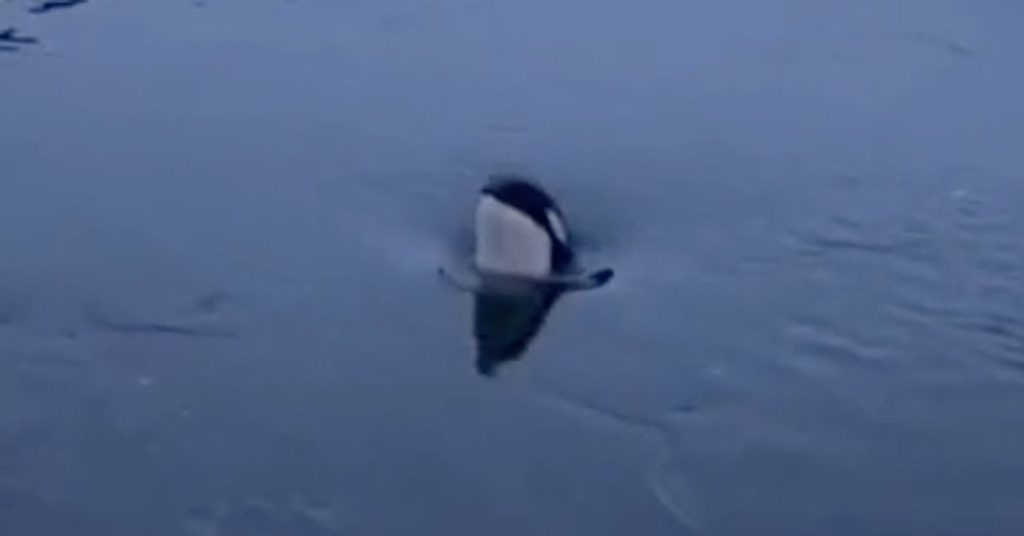The orphaned orca calf, kʷiisaḥiʔis, was trapped in a Canadian lagoon for more than a month after her pregnant mother beached at low tide and died on Vancouver Island. The 2-year-old female killer whale could be seen swimming in circles in the shallow water, calling out for her mother. The Ehattesaht First Nation described her cries as “sorrowful” and worked with Canada fisheries officials, scientists, and experts to try to free her. Despite unsuccessful attempts using recorded orca sounds and boats to herd her out, the calf was finally able to swim out of the lagoon on her own early one morning.
Rescuers were able to get the calf to eat seal meat chunks they threw into the water, buying some time for the malnourished animal before she swam towards an exit point. The Ehattesaht Nation praised kʷiisaḥiʔis for swimming past the sand bar where her mother passed away, under a bridge, down Little Espinosa Inlet, and onto Esperanza all by herself. The nation posted a video of her escape on Facebook and plans to encourage her towards the open ocean. Once in open water, the orca’s main challenge will be finding her pod, as 2-year-old orcas are typically dependent on their mothers and family groups. However, Vancouver Aquarium director Martin Haulena expressed confidence that her pod would take her back in if they reunited.
The Ehattesaht Nation and wildlife officials are urging the public to avoid the area where kʷiisaḥiʔis is in order to give her the best chance at rejoining her pod without human interference. Chief Simon John emphasized the importance of minimizing human interaction to ensure the calf has every opportunity to find her family. The young orca’s journey back to her pod in the open ocean will be a critical one, as she relies on her pod for survival at such a young age. Rescuers are hopeful that she will be able to find her family and be welcomed back into the group once she navigates through the inlet and into the open sea.
The efforts to free the trapped orca calf involved a collaborative effort between First Nation members, Canadian officials, scientists, and other experts who worked tirelessly to come up with strategies to help her swim out of the lagoon. Despite facing challenges and setbacks along the way, including the concern that the calf was becoming malnourished, the rescuers were ultimately successful in guiding her towards the exit point. The use of recorded orca sounds, boats, and food to entice her proved effective in leading her out of the lagoon on her own, allowing her to begin her journey back towards her pod in the open ocean.
The emotional ordeal of the orphaned orca calf caught the attention of many who followed her story as rescuers worked tirelessly to free her from the lagoon. The sorrowful cries of the young whale as she circled in the shallow water without her mother tugged at the heartstrings of those involved in the rescue efforts. The successful outcome of her escape brought relief and joy to those who had been working towards her release, with the Ehattesaht Nation celebrating her freedom on social media. The resilience and determination of kʷiisaḥiʔis, now known as the “Brave Little Hunter,” serve as a reminder of the importance of conservation efforts to protect and preserve marine wildlife like orcas in their natural habitats.


